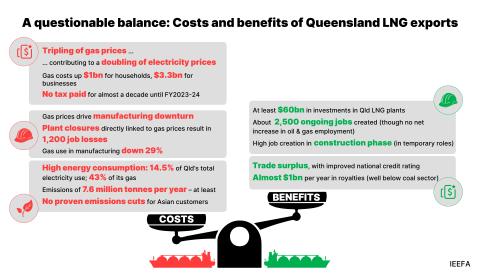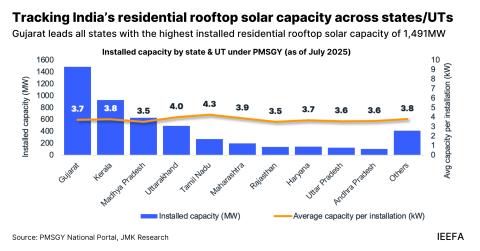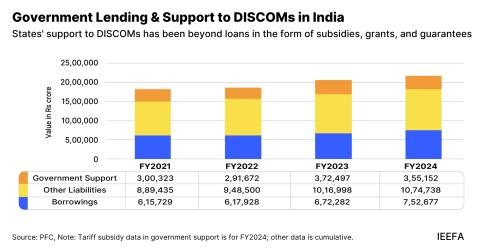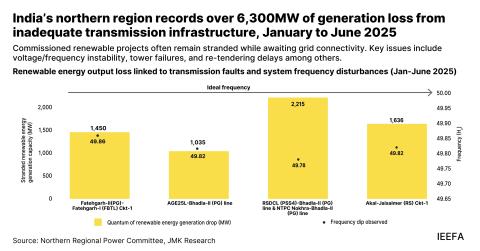IEEFA Puerto Rico: PREPA’s Approved Budget Faces Five Years of Shortfalls
May 25, 1018 (IEEFA) — A budget review published today by the Institute for Energy Economics and Financial Analysis of the approved fiscal-recovery blueprint for the Puerto Rico Electric Power Authority (PREPA) concludes that the plan faces billions in financial risks that will hinder the transformation of the grid.
The plan, certified in April by the Financial Oversight and Management Board (FOMB) for Puerto Rico, lays out a road map for the physical and financial transformation of PREPA and is the first step in restoring investor confidence in the publicly-owned utility.
The IEEFA report finds that as a result of lower-than-projected revenues and higher-than-projected expenses, the utility faces $170 million in budget shortfalls in fiscal year 2019, which begins in July. It puts PREPA’s average annual deficits through 2023 at $1 billion.
The report—“The Puerto Rico Electric Power Authority’s Flawed Fiscal Plan: Budget Shortfalls and Weak Implementation Plan Create Substantial Risk”—cites numerous hurdles to PREPA achieving its objectives.
“Without recurring budget balance and the demonstrated discipline to achieve it over several years, none of PREPA’s plans for new transmission, distribution or generation can be achieved,” the report states.
“That means either imposing higher rates or putting off urgent grid-rebuilding needs,” said Tom Sanzillo, lead author of the report and IEEFA’s director of finance. “Operational improvements and grid modernization require investments that PREPA cannot make if its budget remains chronically out of balance.”
The Fiscal Plan appropriately acknowledges the two biggest factors causing the financial crisis:
- PREPA’s $9.2 billion legacy debt load is unaffordable;
- PREPA’s annual fuel budget is more than $1.8 billion, far too expensive when renewable energy can be created at substantially lower costs.
“The governor, FOMB and PREPA all agree that PREPA cannot afford to pay back $9.2 billion in legacy debt. They also acknowledge that the annual bill for fuels is unsustainable and that renewable energy investments are an urgent necessity in order to balance the budget.” Sanzillo said.
Barriers to success also include island-wide economic weakness that will lower electricity demand; risk that unaffordable rates will be required if PREPA customers are forced to pay back part of $9.2 billion in legacy debt; the risk that PREPA fails to invest in renewable energy; the risk that budgeted federal aid for reconstruction will not fully materialize; and the possibility that fuel and purchased power costs will be higher than expected.
The report cites in particular the absence since 2014 of audited PREPA financial data, and Sanzillo said the FOMB approved plan is fundamentally lacking in several other respects: “It is internally inconsistent, with few details on major expense categories and savings presented without reference to how the benefits will improve the budget.”
But the report concludes that the weakest part of the plan is its privatization initiative.
“As currently designed, the privatization scheme does not address PREPA’s weak financial fundamentals,” Sanzillo said. “It bypasses energy-planning requirements, competitive bidding rules, labor agreements and rate regulation—all critical if PREPA is to recover from its history of past failures.”
“The fact is, the authority, under the fiscal plan, expects to sell off assets without any plan for a new generation system or a modern, well-regulated public utility. The current administration has failed in its most recent attempts to engage private contractors to rebuild the grid after the hurricane. The Fiscal Plan and privatization proposal shows they have learned nothing from this experience. ”
“Bondholders are also at risk,” Sanzillo said. “Persistent budget gaps will mean that less capital will be available for investment in transmission and distribution and in renewable energy generation, so the overall transformation of the system—toward renewables and away from fossil fuels—is likely to take longer than planned. Bondholders who hope to lay claim to future budget surpluses are likely to be disappointed.”
IEEFA conducted this fiscal review of PREPA to support public demands for more transparency in the wake of PREPA’s bankruptcy and the creation of the Financial Oversight Board. “There is a need for improved access to financial information to conduct public debate on PREPA’s future,” Sanzillo said. “Ongoing independent budget reviews by IEEFA, and hopefully others, covering major aspects of Puerto Rico’s Fiscal Plans should help to identify progress and to identify challenges to its success.”
Spanish-language version of executive summary: El Plan Fiscal Defectuoso de la Autoridad de Energía Eléctrica de Puerto Rico: Los Déficits Presupuestarios y la Débil Implementación Crean un Riesgo Sustancial
Media Contact:
Karl Cates, [email protected], 917-439-8225














